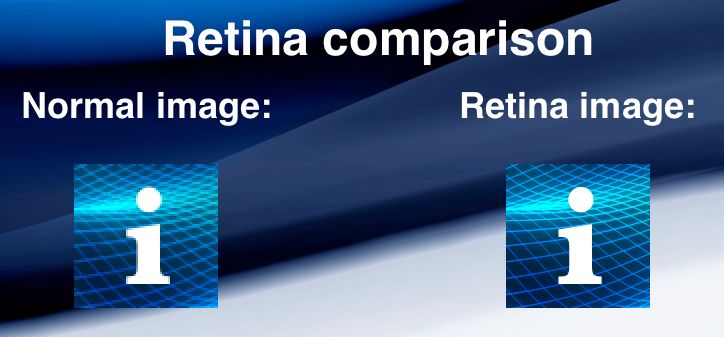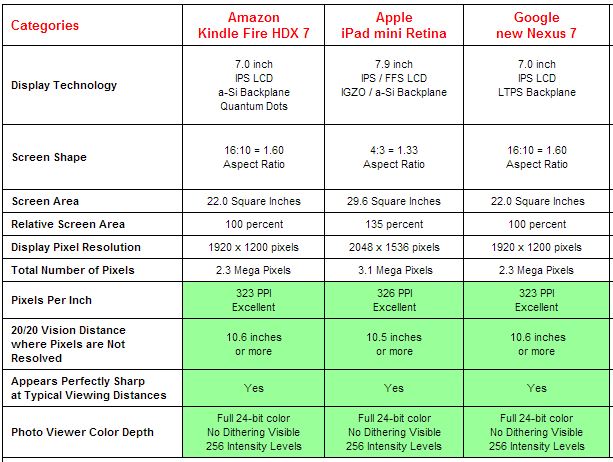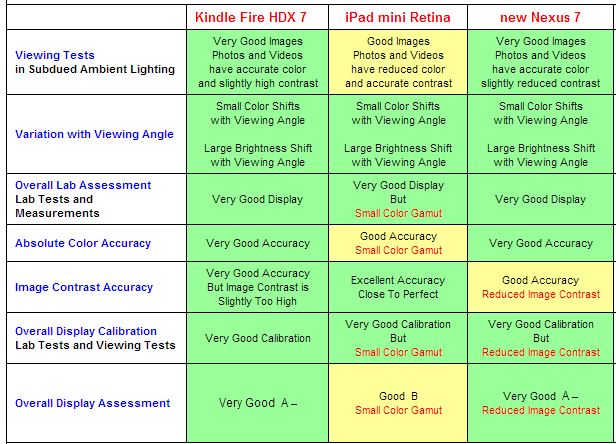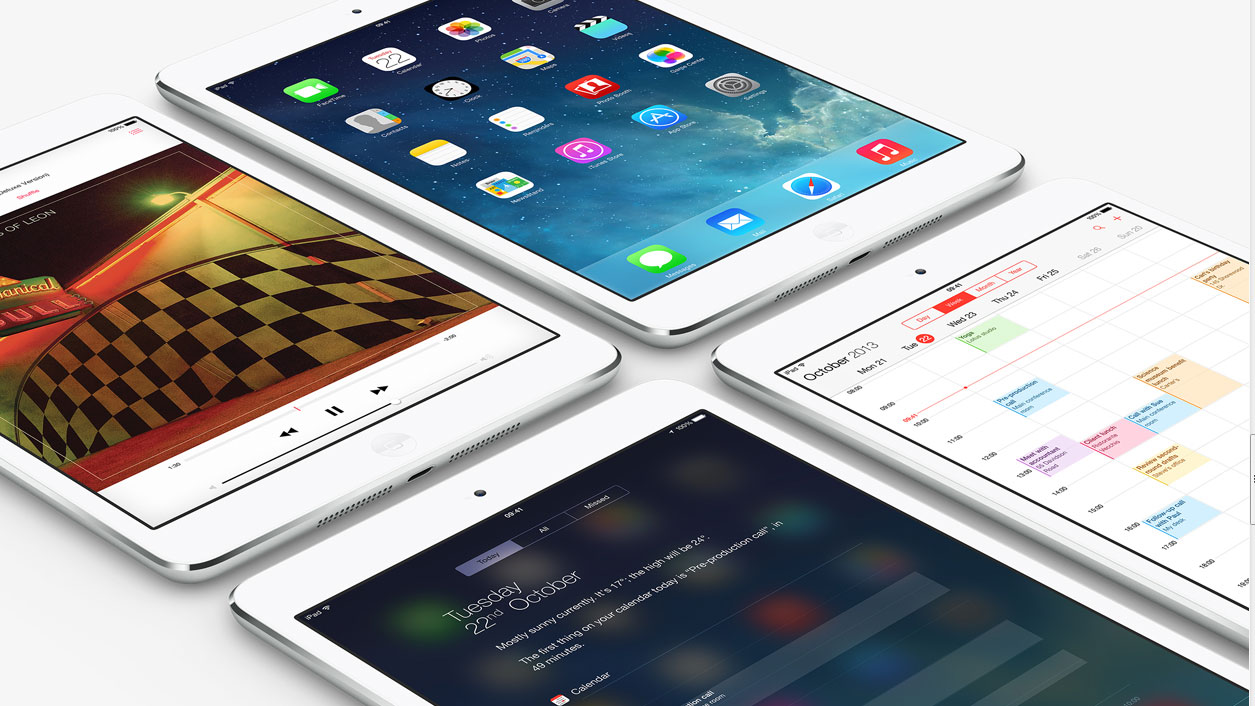Why you can trust TechRadar
The Retina display on the iPad mini 2 was overdue. It should have appeared on the first version, but either Apple was struggling to get that technology in at the right price at the time, or just wanted to leave something for users to upgrade to. Whatever the reason, it felt very late when it arrived.
Given there were multiple rumors of Apple's iPad mini 2 screens being hard to produce, leading to delays just after launch, I can perhaps believe the earlier version of events – but given Apple's larger profit margins, I reckon that if it had wanted to it could have launched a Retina iPad mini straight off.
Anyway, the good news is that it arrived eventually, and it still looks stunning. The crisp characters, the more realistic colors, the sharpness of the icons – all excellent and well represented.

Some have criticized the mini 2 for having slightly more washed-out colors compared to the Air tablets, but only in side-by-side comparisons is this evident – I couldn't help but be impressed by the added sharpness every time I turned on the smaller tablet.
In fact it's so much better that when I handed this device to an iPad mini owner they were visibly upset – you could see they wanted to upgrade from a device that cost a fair amount only a year before the iPad mini 2 debuted.
I'm still torn on the issue of screen ratio – the iPad mini 2 follows Apple's tablet strategy of keeping the 4:3 screen, which is the same as that of TVs before widescreen came in.
This means video needs the black bars above and below – and that did seem horribly last-generation. However, since then many other 4:3 tablets have come onto the market to compete with Apple's lower-cost slate, showing that it might not have been the worst idea after all.
However, while video watching is a large portion of what you're going to do with the mini 2, it isn't the primary reason to buy the tablet. For web browsing, swishing through the home screen or using some of the 725,000-plus dedicated iPad apps, the larger screen (at 7.9 inches) is excellent, offering more space by expanding the sides a little more.
So while the video experience seems a little marred, I do appreciate that the additional pixels make scrolling through the web that much nicer, and gaming becomes more immersive.
When you've got a graphics chip as capable as the one on offer here, you'll see that's a real plus point.
So Apple: I'm still irked that you took this long to deliver us an iPad mini with a Retina display, but by making it the same resolution as the iPad Airs (1,536 x 2,048) and higher-res than much of the competition (Amazon's Fire HD 8 is stuck on 800 x 1,200) you've delivered a really cracking screen that goes far beyond what would be acceptable on a tablet.
Some have claimed it was hypocritical to criticize the iPhone 5S for not coming up with new screen technology and not do the same with the mini 2, but to our minds the distinction is clear.
The mini 2 needed to only make the step up to Retina to be considered a success, as tablets are held to a different standard to phones. And to pack this many pixels into a sub-8-inch screen, bringing the same PPI as the iPhone released in the same year, is really impressive too.
However, let's get a bit more technical now: the only problem, if I was to identify one, is that Apple hasn't made the best screen on the market, according to DisplayMate. Ray Soneira of the laboratory testing facility ran competing displays through a variety of tests, and while the mini 2 performs fairly well in most scenarios it was often bested by the competition of the time – namely the Kindle Fire HDX 7 and the 2013 Nexus 7.

Credit: Republished with permission from DisplayMate Technologies
For instance, while all three showed a really good level of sharpness at distance and differing viewing angles, and critically performed well when being calibrated, in many cases the iPad mini 2 came up short. For instance, the color reproduction wasn't as good compared to the other two, and the contrast wasn't as accurate.
The iPad Mini 2 definitely errs on the more 'natural' when it comes to color reproduction, according to DisplayMate's findings, and in our own side-by-side tests I noted the same thing. The iPad Mini 2 takes things too far at times, where the others show a clear and rich picture, especially when viewing photos.
This leads to lower color accuracy too, where the others managed it quite happily; again, natural options are to the fore here. I noticed that the Amazon Kindle Fire HDX had the best screen of the three for movies and photos, which is down to two things: dynamic contrast and the use of quantum dot technology.

Credit: Republished with permission from DisplayMate Technologies
The former you'll be able to see easily: lower the brightness on the screen when looking at a photo and the decrease won't be uniform. This might sound bad, but what it does is keep the darker scenes well lit, so you can still make out all portions of the screen without losing the overall visibility. For a tablet that some might say is only there to enable users to buy more things, the technology is very effective.
But what of Quantum Dots? Here's what DisplayMate had to say on the subject: "Quantum Dots are almost magical because they use Quantum Physics to produce highly saturated primary colors for LCDs that are similar to those produced by OLED displays.
"They not only significantly increase the size of the Color Gamut by 40-50 percent but also improve the power efficiency by an additional 15-20 percent. Instead of using White LEDs (which have yellow phosphors) that produce a broad light spectrum that makes it hard to efficiently produce saturated colors, Quantum Dots directly convert the light from Blue LEDs into highly saturated primary colors for LCDs."
You can head over to the DisplayMate report to see the full findings of the tablet test, but the results were that while the Amazon and Google tablets were matched in terms of performance, the iPad Mini 2 had less-accurate color reproduction, and lower peak brightness while still drawing the most power – it was also the most reflective.
That said, I do like the natural reproduction of the iPad Mini 2; the other two did err on the 'impressive' side when it comes to display type, which can grate slightly at times but wow most others.
However, the iPad mini 2 is the only one of those three tablets still officially on sale – so whatever the pros and cons of the screen, it's lasted longer than the competition.

Gareth has been part of the consumer technology world in a career spanning three decades. He started life as a staff writer on the fledgling TechRadar, and has grew with the site (primarily as phones, tablets and wearables editor) until becoming Global Editor in Chief in 2018. Gareth has written over 4,000 articles for TechRadar, has contributed expert insight to a number of other publications, chaired panels on zeitgeist technologies, presented at the Gadget Show Live as well as representing the brand on TV and radio for multiple channels including Sky, BBC, ITV and Al-Jazeera. Passionate about fitness, he can bore anyone rigid about stress management, sleep tracking, heart rate variance as well as bemoaning something about the latest iPhone, Galaxy or OLED TV.
